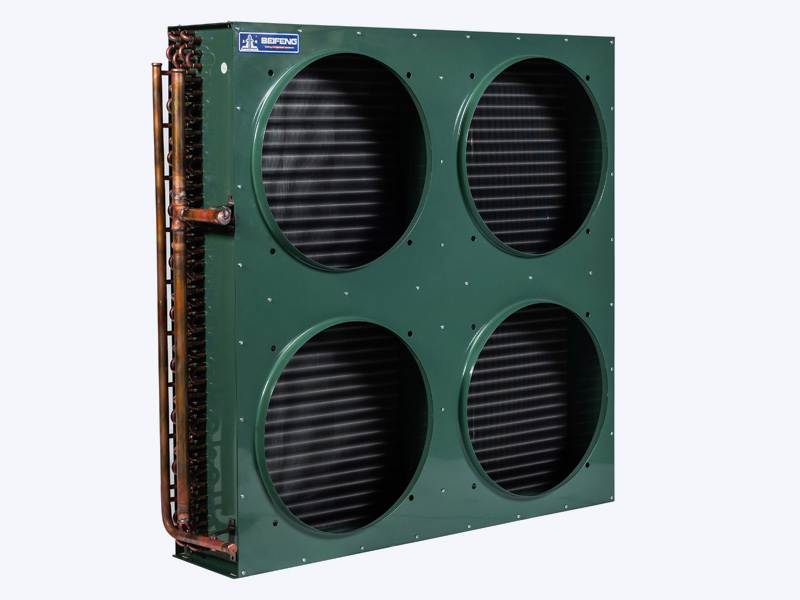Material Selection: The choice of materials in air-cooled condenser construction significantly influences durability and reliability. Stainless steel is preferred for its corrosion resistance and strength, suitable for harsh outdoor environments. Aluminum alloys offer lightweight properties and good heat transfer capabilities, crucial for efficient cooling. Corrosion-resistant coatings, such as epoxy or polymer coatings, further protect against environmental degradation, ensuring long-term performance without material deterioration.
Coil Design: The design of condenser coils is engineered to optimize heat transfer efficiency while maintaining resistance to fouling and corrosion. Fin density, tube diameter, and fin spacing are meticulously calculated to maximize surface area for heat exchange without compromising airflow resistance. This design approach minimizes the accumulation of debris and contaminants on the coil surfaces, preserving thermal efficiency and extending the condenser's operational lifespan.
Fan Configuration: Efficient airflow management is pivotal in maintaining optimal operating temperatures and enhancing component longevity. Fan blades are designed for maximum airflow with minimal noise and energy consumption. The number, size, and placement of fans are optimized to ensure uniform air distribution across the condenser coils, preventing hot spots and ensuring consistent cooling performance under varying environmental conditions.
Coil Protection: Protective measures such as corrosion-resistant coatings and robust fin designs are integral to prolonging condenser life. Coatings applied to coils enhance resistance to corrosion from exposure to moisture, salt, or chemicals in the air, crucial for outdoor installations. Durable fins, often made from aluminum or copper alloys, are engineered to withstand physical impact and environmental stressors, safeguarding against damage and maintaining efficient heat transfer capabilities.
Condenser Layout: The layout and accessibility of critical components are designed for ease of maintenance and serviceability. Access panels, strategically positioned around the condenser unit, facilitate routine inspections, cleaning, and repairs without disrupting operations. Serviceable components, including fan motors and electrical connections, are accessible for quick troubleshooting and replacement, minimizing downtime and optimizing operational reliability throughout the condenser's service life.
Weather Resistance: Outdoor condensers are exposed to a range of weather conditions, necessitating robust design features for weather resistance. Weatherproof housing materials, such as galvanized steel or UV-resistant plastics, provide durability and protection against moisture ingress and structural degradation. Fan guards and louvers prevent debris accumulation and ensure unimpeded airflow, essential for maintaining efficient heat dissipation and operational integrity in challenging outdoor environments.
Vibration and Noise Control: Advanced design techniques incorporate vibration-dampening mounts and noise-reducing fan blade profiles to mitigate operational noise and mechanical vibrations. Vibration isolation pads beneath fan assemblies and resilient mounts for compressor units minimize vibration transfer to surrounding structures, reducing wear on components and enhancing operational stability. Noise-reducing features, including aerodynamically optimized fan blades and acoustic insulation within housing panels, contribute to quieter operation without compromising cooling efficiency.
FN Serial Air-Cooled Condenser


 English
English عربى
عربى 简体中文
简体中文












